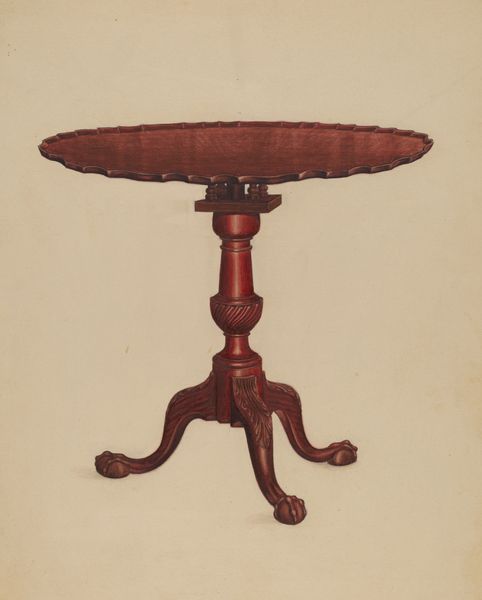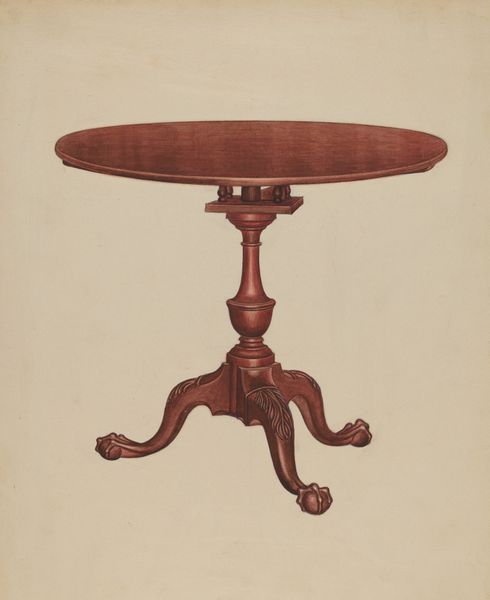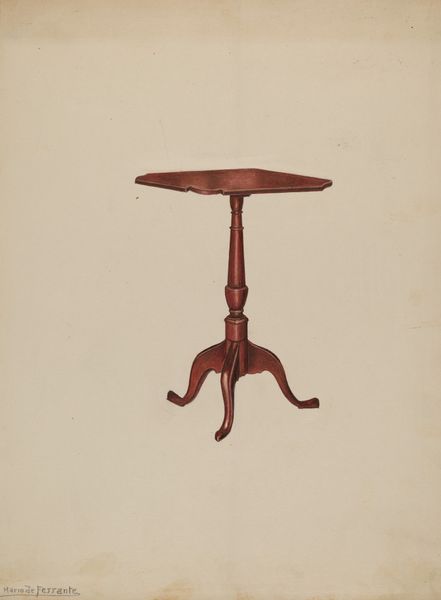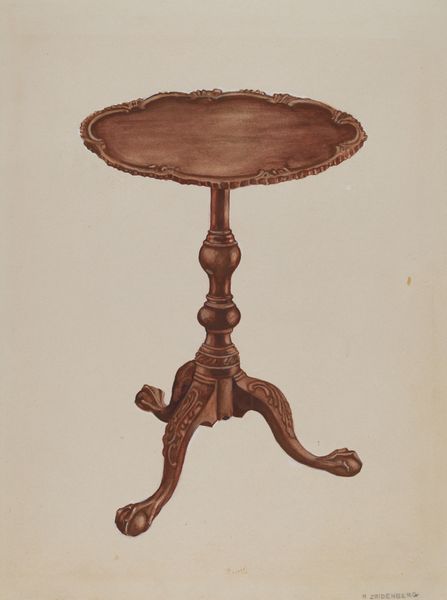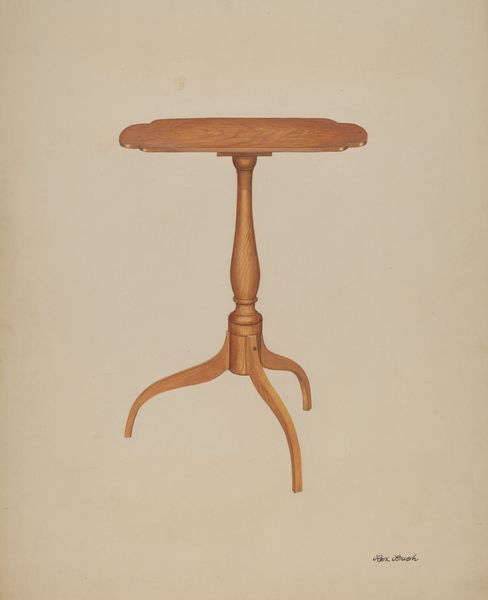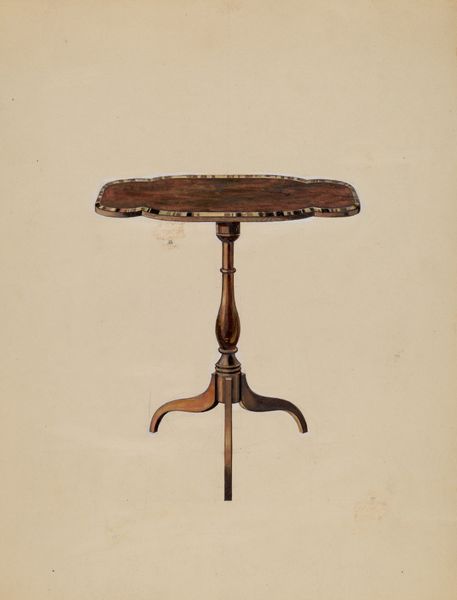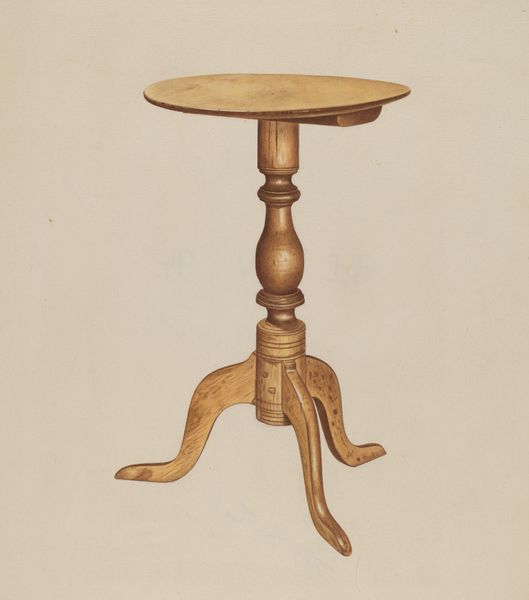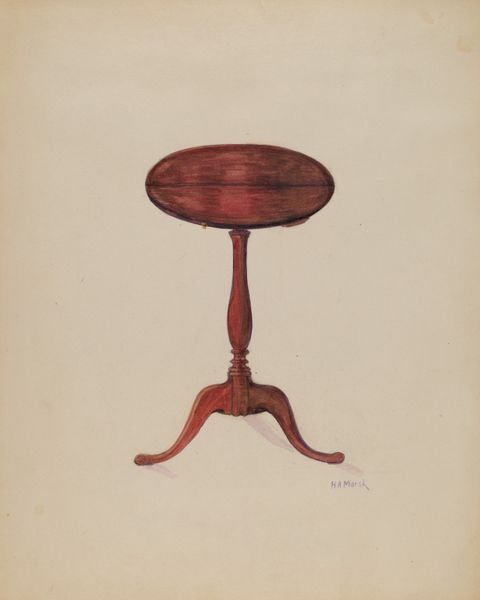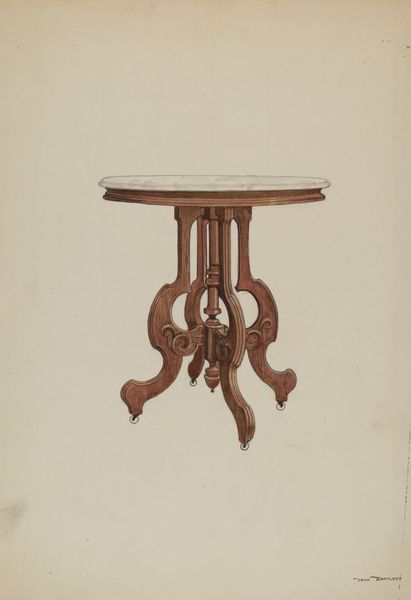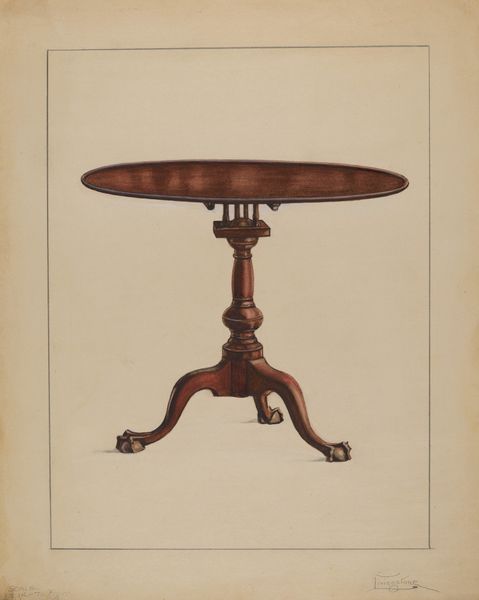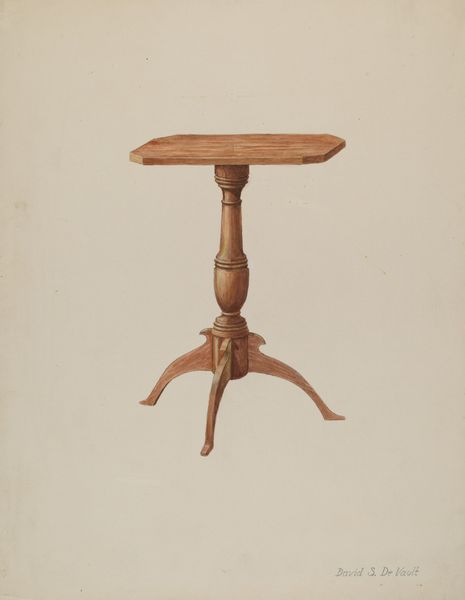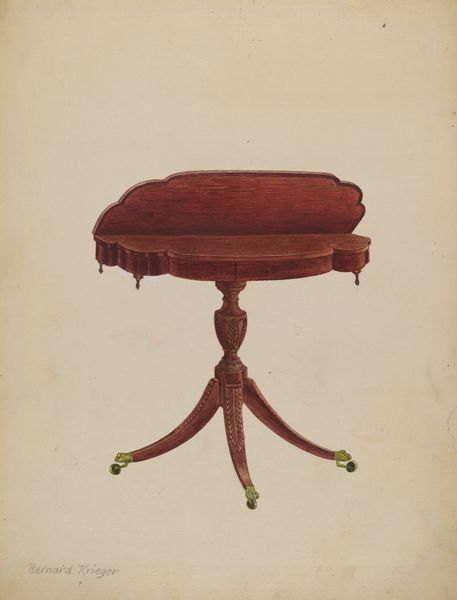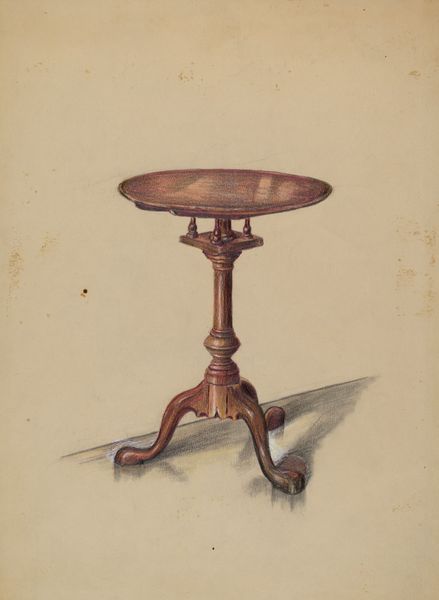
drawing, watercolor
#
drawing
#
charcoal drawing
#
watercolor
#
watercolour illustration
#
watercolor
#
realism
Dimensions: overall: 29.4 x 22.5 cm (11 9/16 x 8 7/8 in.) Original IAD Object: 31 3/4"x33 1/4"
Copyright: National Gallery of Art: CC0 1.0
Editor: This is Francis Borelli's "Tilt-top Table," created around 1936. It's rendered with watercolor and drawing techniques, a very precise depiction. What strikes me is its seemingly simple subject matter, a piece of furniture, but somehow it feels imbued with history and perhaps a touch of melancholy. How do you interpret this work? Curator: It's interesting that you pick up on a sense of history. This drawing, though seemingly straightforward, exists within the larger context of design history and the Arts and Crafts movement. The emphasis on meticulous rendering suggests a valuing of craftsmanship and perhaps a critique of mass production during the interwar period. Who was commissioning these works and to what end? Did Borelli consider this merely a design rendering or something more? Editor: That’s fascinating! I hadn't considered the socio-economic context. Do you think the medium – watercolor and drawing – plays a role in that critique? Curator: Absolutely. Unlike a photograph, which could objectively document a piece of furniture for mass consumption catalogs, this handmade rendering highlights the unique qualities of the table. Consider the intended audience. Would it be used by artisans to promote specific pieces or by historians to archive traditional forms of craftmanship? That dictates its value beyond mere design. Editor: So it’s not just about showing the table; it’s about making a statement about craft in a changing world? Curator: Precisely. And by understanding the drawing's place within this history, we can start to unpack its deeper meanings and purpose beyond depicting a decorative object. It encourages us to appreciate its symbolic worth rather than just functional application. Editor: That definitely gives me a new perspective. I had only considered its aesthetic qualities at first. Thank you for widening the lens through which to look at the drawing! Curator: My pleasure. It is always important to analyze artworks within the larger historical context of society and their cultural perception.
Comments
No comments
Be the first to comment and join the conversation on the ultimate creative platform.
